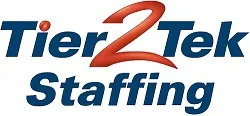Making the decision on how to transition to a new career can feel both exciting and intimidating. Shifting from one professional path to another often requires strategic planning, skill-building, and confidence. Whether you’re moving into a new industry, seeking better work-life balance, or pursuing a long-held passion, understanding the process will help you navigate the journey successfully.
Evaluate Your Current Situation
Before taking any major steps, take an honest look at where you are now. Identify what’s working and what’s not in your current role. Consider the aspects of your job that energize you and those that drain your motivation. This reflection will clarify your priorities and guide your next move.
Ask yourself questions such as:
- What do I enjoy most about my current work?
- What tasks or environments bring out my best performance?
- What am I missing that I’d like in my next career?
Understanding your motivations ensures that your next choice aligns with your values and lifestyle.
Research New Career Paths
Gathering information about your potential new field is essential. Explore the daily responsibilities, work culture, and long-term growth opportunities of different roles. Look at job postings, company websites, and industry news to understand the current trends and demands.
You can also:
- Connect with professionals already working in your desired industry.
- Attend webinars or industry events to gain firsthand insights.
- Read case studies and career transition stories to learn from others’ experiences.
This research phase helps you confirm that your new direction is both appealing and sustainable.
Identify Transferable Skills
Most professionals underestimate how many of their existing skills are valuable in other industries. Communication, leadership, problem-solving, and project management are just a few abilities that can easily transfer across sectors.
Steps to highlight transferable skills:
- List the key tasks you’ve mastered in your current and past roles.
- Match these with the core requirements of your target jobs.
- Reframe your achievements to show relevance to your new field.
Show employers that you can bring immediate value even without years of experience in the new area.
Bridge the Skills Gap

Once you’ve identified where your skills fall short, take action to close those gaps. You don’t need to return to full-time education—many accessible learning options can help you build credibility.
Consider:
- Short-term online courses or certifications.
- Volunteering or freelance projects that let you apply new skills.
- Joining professional associations to stay current with best practices.
Gaining hands-on experience while learning helps you adapt faster when you officially make the switch.
Build a Strong Professional Network
Your network can be a powerful tool during a career transition. Building connections with people in your desired field increases your visibility and access to opportunities.
To strengthen your network:
- Reach out to former colleagues or mentors for advice.
- Connect with professionals on LinkedIn and engage with their posts.
- Attend industry meetups, conferences, or workshops.
- Offer to collaborate on small projects to establish credibility.
Authentic networking is not just about job leads. It’s about building meaningful professional relationships that support your long-term growth.
Update Your Resume and Online Presence
Your resume and digital profiles should reflect your new direction. Focus on results, not job titles, and tailor your accomplishments to the requirements of your target role.
Tips for optimization:
- Rewrite your professional summary to emphasize your career goals.
- Use keywords related to your new industry to boost search visibility.
- Highlight achievements that show adaptability, learning, and initiative.
- Align your LinkedIn headline and “About” section with your new career focus.
Employers will notice the clarity of your career narrative when your materials show consistency and purpose.
Gain Experience Before Fully Transitioning

If possible, start exploring your new field while still employed. A gradual shift can reduce stress and provide a smoother adjustment period.
You could:
- Take on part-time or freelance work related to your new area.
- Join relevant side projects within your current company.
- Shadow a professional in your target role.
Practical experience not only validates your interest but also demonstrates commitment to future employers.
Manage Financial Considerations
Career transitions can impact your income temporarily. Planning your finances ensures stability while you adjust.
Practical steps:
- Build an emergency fund before making the switch.
- Reduce unnecessary expenses to increase flexibility.
- Research average salaries in your target field.
- Consider consulting or part-time work as a bridge income.
Being financially prepared helps you focus on long-term success rather than short-term pressure.
Develop a Transition Timeline
A well-structured timeline keeps your career change on track. Break down your transition into stages with realistic goals and deadlines.
Example timeline:
- Month 1–2: Research potential industries and roles.
- Month 3–4: Enroll in relevant training or certifications.
- Month 5–6: Begin networking and updating your resume.
- Month 7–9: Apply for positions or start freelancing.
Tracking progress helps maintain motivation and momentum as you move closer to your new career.
Overcome Self-Doubt and Build Confidence

Doubt is natural during a career change, but it doesn’t have to control your decisions. Confidence comes from preparation, persistence, and mindset.
- Celebrate small wins, like completing a course or landing an interview.
- Surround yourself with supportive peers or mentors.
- Focus on progress rather than perfection.
- Visualize your success to reinforce motivation.
Confidence grows with each step you take toward your goals.
Stay Patient and Persistent
Career transitions rarely happen overnight. Employers value candidates who demonstrate perseverance and adaptability. Stay focused on your purpose and remain flexible as opportunities unfold.
Rejection or delays are part of the process. Use them as feedback rather than setbacks. Each conversation, interview, or project brings you closer to finding the right fit.
Changing careers can transform not just your professional life but also your sense of fulfillment and purpose. By understanding how to transition to a new career thoughtfully, through research, networking, and strategic planning—you set yourself up for long-term satisfaction. Embrace the process, trust your instincts, and take consistent action toward building the future you envision.
Content reviewed and published by Tier2Tek Staffing Editorial Team .

